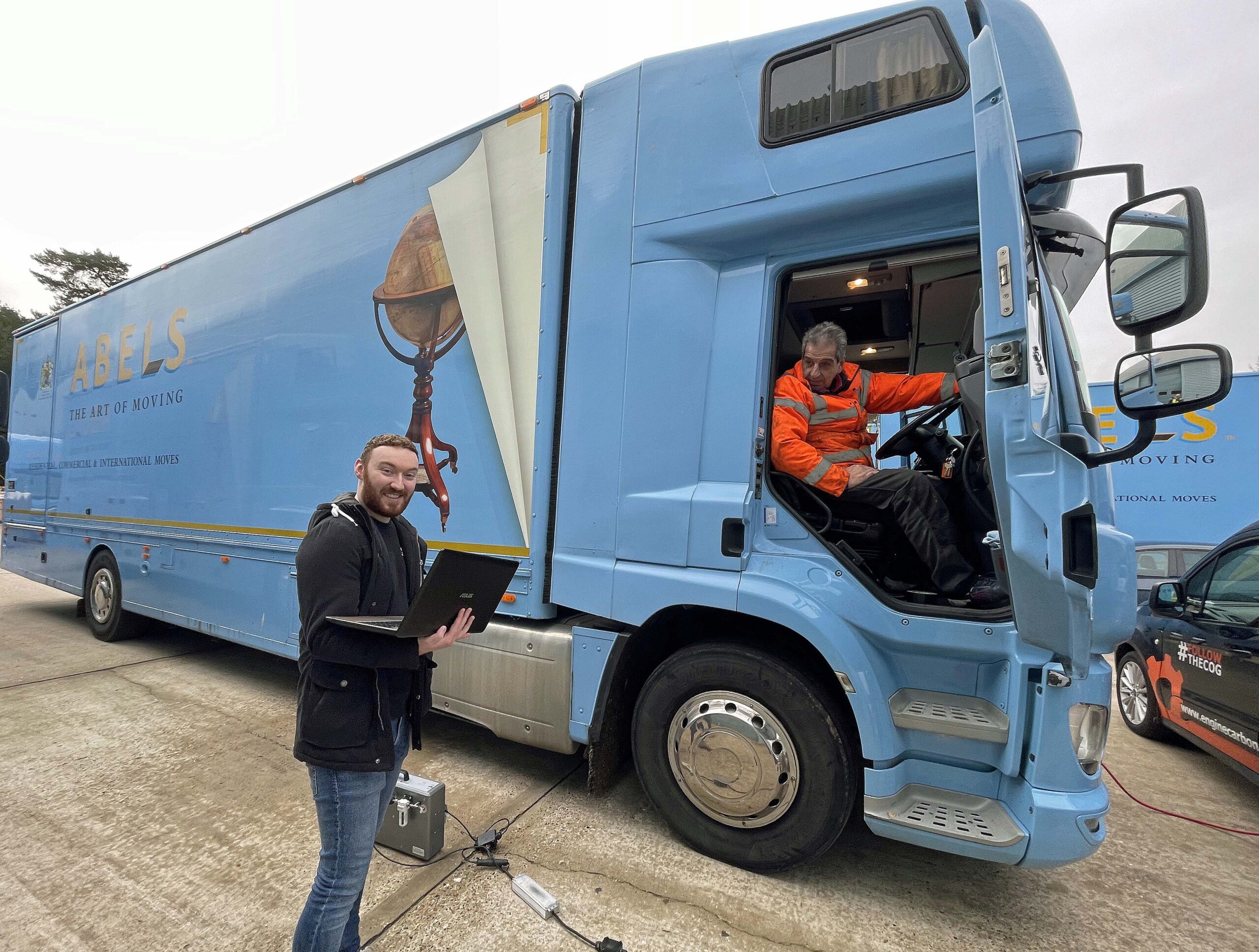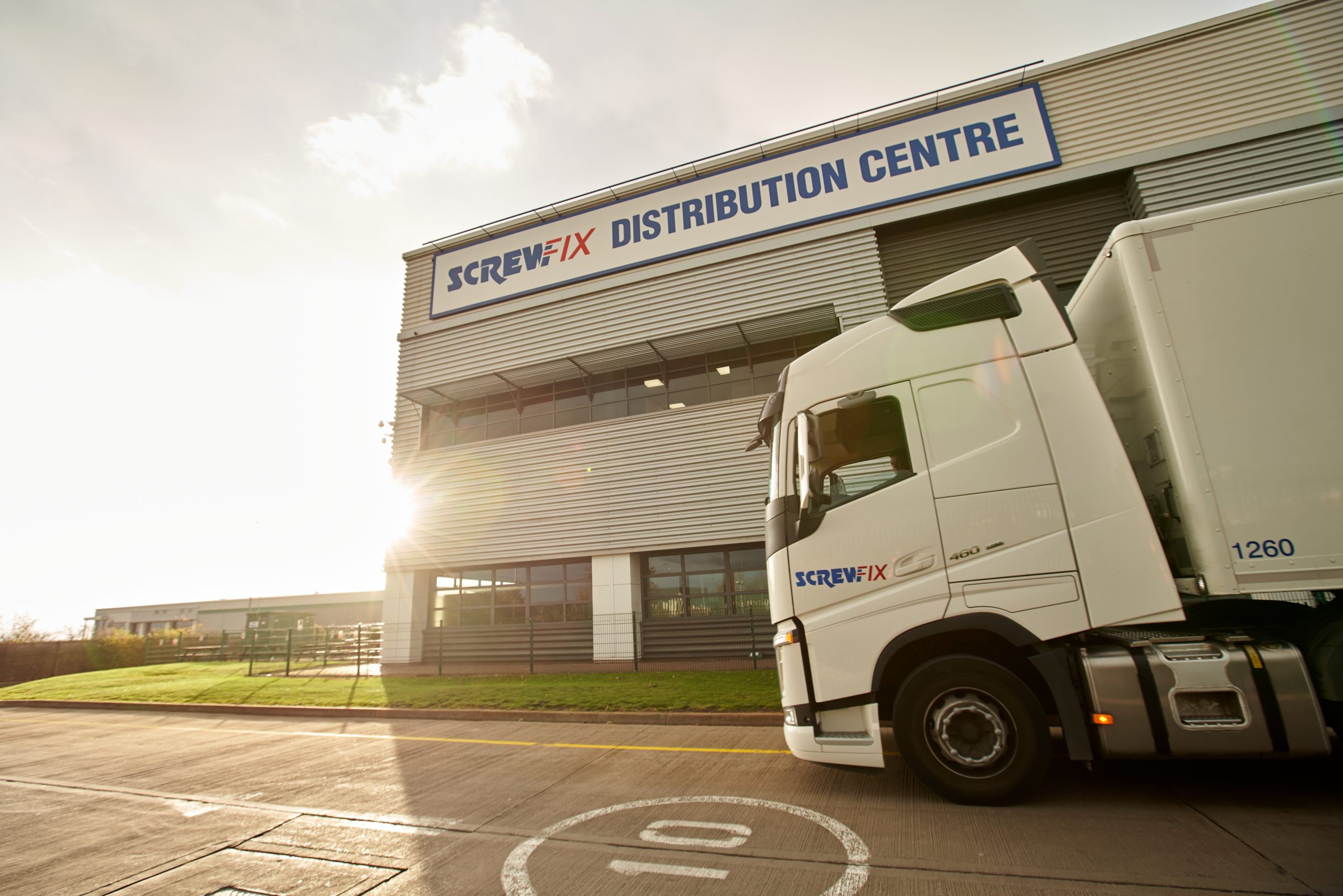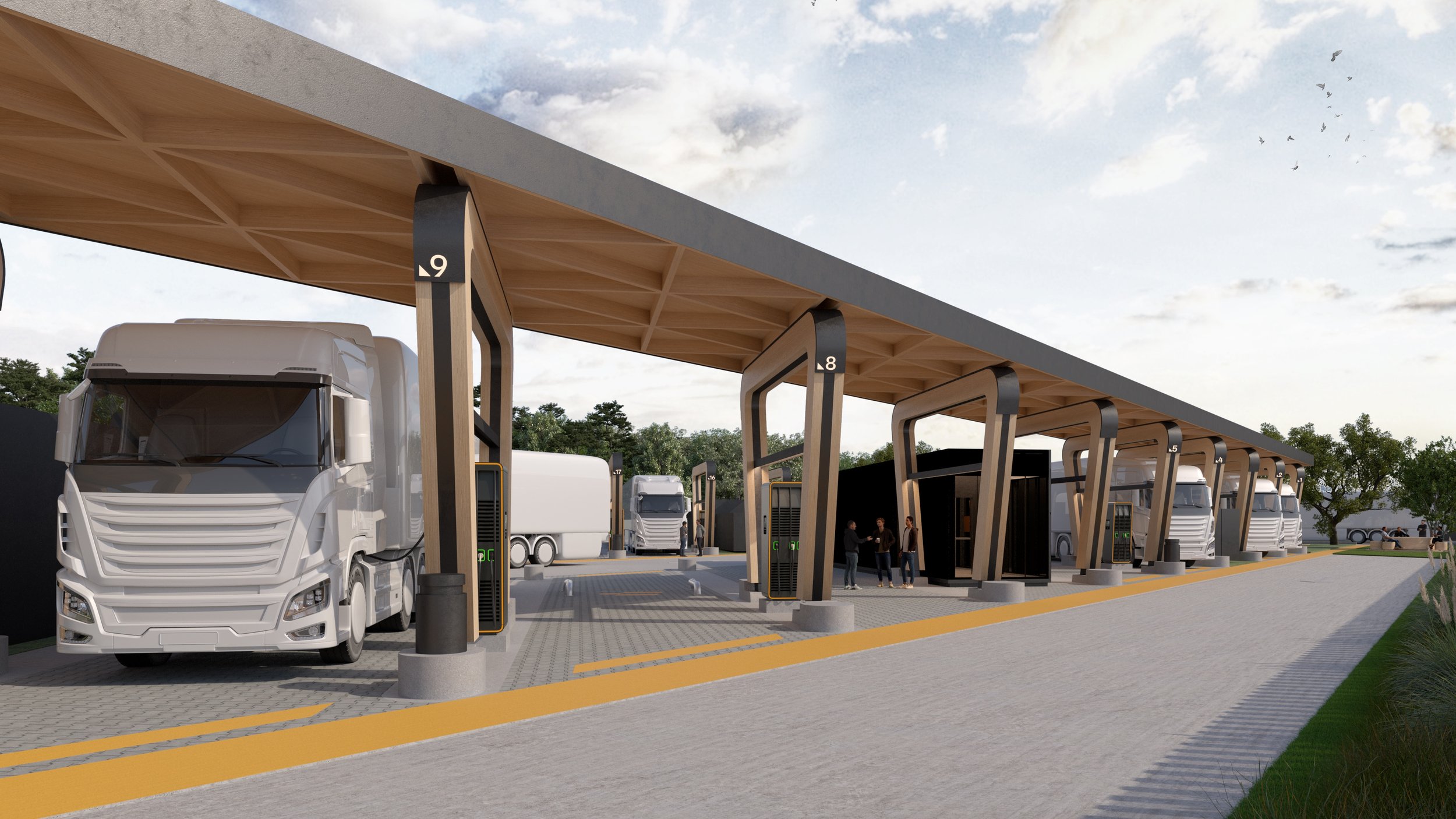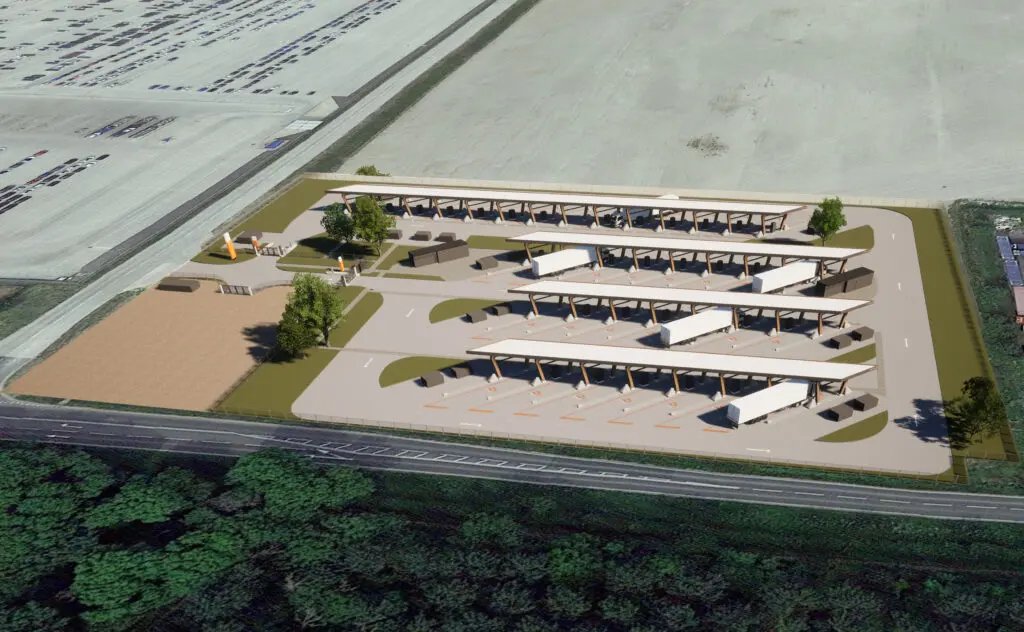As road transport emissions continue to rise, fleet operators are under pressure to accelerate the adoption of alternative fuels. But in the race to net zero, what options are truly scalable for commercial road transport?
With the UK’s phase-out targets for sales of new petrol and diesel heavy goods vehicles (HGVs) looming – 2035 for vehicles up to 26 tonnes and 2040 for all new HGVs – the country’s logistics sector is slowly yet surely approaching a pivotal juncture. Fleet managers across the logistics and supply chain sectors will soon face unprecedented pressure to transition to low-carbon alternatives. Yet, amid bold ambitions, cost constraints and infrastructure bottlenecks remain stubborn obstacles. As the market for alternative fuels matures, operators must navigate a complex landscape to find scalable, cost-effective, and operationally viable solutions that align with net-zero strategies.
The challenge is not a lack of options but of identifying the right fuel mix. Each potential pathway – from battery-electric and hydrogen to biofuels such as hydrotreated vegetable oil (HVO) and biomethane – presents a different balance of advantages and trade-offs. Operators must weigh factors including fuel resilience, lifecycle costs, infrastructure readiness, and real-world performance in fleet deployment. Electric power is often championed as the logistics industry’s zero-emissions silver bullet.
FAST FACT: There are more than 500,000 HGVs registered in the UK, yet fewer than 1,000 are zero-emission vehicles as of early 2025. Source: UK DfT
It is certainly the most mature alternative fuel pathway for light-duty vehicles, with battery electric vans gaining traction across last-mile delivery fleets. However, scaling up to heavy-duty applications remains a significant hurdle. “Just 300 electric HGVs are registered in the UK out of a 500,000-strong fleet,” says Helen Flanagan, product director – EyeQ, Wincanton. “We operate 24 for IKEA Home Deliveries, but a lack of charging infrastructure, particularly for long-haul operations, remains a key stumbling block.” As of early 2025, the UK’s public electric charging infrastructure for HGVs is in its nascent stages. Recent developments, such as the opening of the UK’s first public electric HGV charging hub at Able Humber Port in Immingham, highlight the initial steps toward supporting the electrification of freight transport.
It also underscores the pressing need for a more robust and widespread charging network to accommodate the anticipated growth in electric HGV adoption. Industry experts acknowledge the challenges posed by the limited infrastructure for electric HGVs. For instance, Chris Ashley, the Road Haulage Association’s Net Zero policy lead, welcomed the publication of new guidelines by the British Standards Institute for public HGV charging points (titled ‘BSI Flex 2071 v2.0:2025-01’) earlier this year, stating: “We know that hauliers and coach operators will want to charge their vehicles en route at truck stops and motorway service areas. With the publication of these standards, another important piece of the Net Zero jigsaw puzzle falls into place to allow operators and charge point providers to plan for this provision.”

Battery-electric vehicles (BEVs) boast excellent energy efficiency and lower maintenance needs, and their zero tailpipe emissions make them attractive for urban operations. However, concerns persist around battery weight reducing payload capacity, range limitations, and depot power upgrades. Grid capacity is a major challenge, especially as logistics depots compete for access to fast, high-voltage charging. And as highlighted in ‘5 Alternative Fuel Technologies and Their Impact on the Automotive Supply Chain’ – a trend report released in September 2024 by CHEP Automotive, a provider of reusable transport packaging solutions — the upstream environmental footprint of battery production must be considered.
Life-cycle assessments show that battery manufacturing, particularly of lithium-ion cells, accounts for up to 60% of embedded emissions in EVS. Solutions such as battery passports – digital records that track a battery’s materials, production methods and lifecycle performance – and solid-state batteries – next-generation cells that replace liquid electrolytes with solid materials for improved energy density, safety and longevity – may improve traceability and performance, but these technologies are still evolving.
Long-haul potential
For long-haul logistics, hydrogen offers a compelling case. It delivers diesel-like refuelling times and range, making it particularly suited to HGVs. Fuel-cell electric vehicles (FCEVs) produce only water vapour at the tailpipe, and when green hydrogen is used, they offer near-total lifecycle emission reductions.
“Hydrogen technology is an interesting alternative to electric power, with councils in Aberdeen and Liverpool already deploying hydrogen-powered buses,” Flanagan notes. “It offers the same duty cycle as diesel but without the emissions.”
However, hydrogen’s high production and vehicle costs, limited fuelling infrastructure, and questions
over green hydrogen scalability remain critical challenges. According to the International Energy Agency’s ‘Global Hydrogen Review 2023′, there are currently only around 1,100 hydrogen fuelling stations in operation worldwide – with well over 300 in China, around 250 in Europe, and fewer than 15 in the UK.

“Utilising hydrogen technology on our vehicles going forward will give us real partnership leverage when it comes to proving ESG compliance and reduction of our carbon output” –Mark Costa-Rising, CCO, AGM Group
Exciting developments are under way, though. Westport Fuel Systems’ H2 HPDI prototype truck recently completed a heavy-haul demonstration in Älmhult, Sweden, transporting 40 tonnes of IKEA home furnishings using hydrogen internal combustion technology. The vehicle was operated by Sweden-based haulage company KAJ Inrikes.
“It’s an affordable and efficient technology because it retains the existing driveline and compression ignition platform,” explains Kaj Johansson, president of KAJ Inrikes. “We’re proud to support our customers’ decarbonisation goals by exploring practical, high-performance hydrogen solutions that don’t require costly overhauls of our existing fleet or infrastructure.”
FAST FACT: HGVs represent around 4% of vehicles on UK roads but contribute to 17% of total road transport CO2 emissions. Source: UK DfT
Meanwhile, UK-based cleantech company AHT Group, which specialises in hydrogen-based carbon reduction technologies, last year trialled a hydrogen-enhanced carbon capture device for diesel HGVs, claiming up to 91% reduction in harmful fine particulates. “This could be a game-changer in cleaning up existing fleets,” says Mark Costa-Rising, CCO at AGM Group, the parent company of Abels Moving Services, which is participating in the trial.
“Utilising hydrogen technology on our vehicles going forward will give us real partnership leverage when it comes to proving ESG compliance and reduction of our carbon output,” Costa-Rising explains. “It will also give us tangible benefits in our social, environmental and financial reporting and put us at the forefront of sustainability performance.”
Scalable – but supply sensitive
Biomethane – in compressed (Bio-CNG) or liquefied (Bio-LNG) form – is already in widespread use across UK logistics. Sourced from organic waste, upgraded biogas can cut CO₂ emissions by up to 90% compared to diesel, and a growing network of UK refuelling stations supports thousands of HGVs. Fleets such as those operated by Waitrose, Asda, and John Lewis have invested heavily in gas-powered trucks.
The infrastructure is comparatively mature, and engines adapted for methane combustion are commercially available. However, the technology is not entirely emissions-free, and supply chain resilience is dependent on sustainable feedstock availability.

As CHEP’s trend report outlines, biomethane remains one of the few viable near-zero options for hard-to-electrify HGVs. Yet despite its promise, production is currently limited – representing just 0.1% of global natural gas demand – and may struggle to scale in line with future logistics growth.
For operators looking for an immediate impact without the burden of retrofitting fleets or installing new infrastructure, HVO represents an attractive transitional fuel. This drop-in diesel substitute is compatible with existing engines and can deliver up to 90% fewer GHG emissions.

“Almost a quarter of transport operations still plan routes manually. There is simply too much fresh air being transported around the UK” – Helen Flanagan, product director, EyeQ, Wincanton
“Following a successful trial, 85% of our logistics fleet serving Screwfix now refuels with HVO,” says Flanagan. T&J Haulage in Lancashire also adopted HVO after a customer request. “We were completely priced out of electric, and hydrogen didn’t work for us,” says Steph Crack, transport and compliance manager. “HVO ticked the box, and our drivers even prefer it because it doesn’t smell.”
Yet availability and cost remain significant barriers to widespread adoption. While 28% of logistics professionals think alternative fuels will be available in one-to-three years, only 25% believe they will be affordable in four-to-six, according to a recent Wincanton study of more than 500 decision-makers for supply chain, transport and logistics in the UK. As with all biofuels, scaling up HVO use raises sustainability questions around feedstocks, which must be sourced from waste oils to avoid land-use conflicts.
Biodiesel offers another route to decarbonisation using existing infrastructure, particularly when blended with conventional diesel in B7 or B20 form. It can also be used neat (B100) in modified engines and is often derived from waste vegetable oil.

However, its real-world performance is affected by cold weather sensitivity, potential engine maintenance issues, and the need for careful feedstock sourcing to ensure sustainability. While biodiesel remains a viable stopgap for many operators, especially those running regional or municipal fleets, its long-term scalability is questionable.
Blending approaches
It appears there is no one-size-fits-all solution. German automotive manufacturer Porsche, for example,
has adopted a mixed fleet strategy, combining electric HGVs, Bio-CNG vehicles and synthetic diesel fuels (HVO100) as part of a trial with the Karlsruhe Institute of Technology. The pilot has already delivered more than 800 tonnes of CO₂ savings across one million kilometres.
CHEP’s trend report also reinforces the value of a diversified strategy. “Different technologies require different parts, some of which – such as batteries and fuel cells – are fragile and volatile items to ship,” says Safak Aktekin, senior commercial director, CHEP Automotive. Logistics and packaging innovations must evolve alongside fuel systems to reduce supply chain waste and Scope 3 emissions.
FAST FACT: The global market for CNG and LPG vehicles will reach US$22.9bn by 2032, doubling from US$11.4bn in 2022. Source: Global Market Insights
So, while alternative fuels are essential, they must be deployed as part of a broader strategy that includes route optimisation, vehicle right sizing, and digital tools. “Almost a quarter of transport operations still plan routes manually,” Flanagan warns “There is simply too much fresh air being transported around the UK.”
Investing in AI-powered planning, load optimisation, and real-time visibility platforms can yield carbon reductions today – without waiting for infrastructure rollouts or legislative clarity.

As Wincanton’s study shows, 66% of firms are under pressure to hit net-zero targets, yet 55% admit they will struggle. Only by combining technology, behavioural change, and fuel innovation can the logistics sector deliver on decarbonisation while maintaining performance.
Ultimately, the green logistics revolution will be driven not just by clean fuels, but by smart systems, supply chain collaboration, and a commitment to operational excellence. The transition may not be easy, but it is already under way – and those who start now will be the ones steering the future of freight.
Powering progress – expert insights from Sustainable Supply Chain Exhibition 2025
At this year’s Sustainable Supply Chain Exhibition, which took place at the NEC Birmingham on March 25-26, a panel of industry leaders gathered to dissect the UK’s readiness for a large-scale switch to low-emission HGV fuels. Moderated by CiTTi Magazine deputy editor Reuben Henry-Fellows, the discussion delivered a frank assessment of the sector’s state of play.Anna Krajinska, UK director at Transport & Environment, argued that “electrification is the only credible long-term solution” for decarbonising road freight, pointing to sluggish UK adoption: less than 0.7% of newly registered articulated HGVs in 2024 were zero-emission. She called for faster rollout of depot charging, stronger regulatory mandates and a UK-wide charging strategy akin to Europe’s 60km (37-mile) corridor standard.
Tim Jones, sustainability director at DPD, echoed these frustrations: “What’s missing is incentive. Regulation alone leads to friction, delay and missed opportunity.” He warned of the sustainability risks of relying on biofuels, noting the UK already consumes 10 times more used cooking oil than it collects domestically – much of it imported and vulnerable to fraud. “If you can’t trace it, don’t trust it.”
Alistair Barnes, senior programme manager at Innovate UK, highlighted the government’s £200m ZEHID programme, which aims to get 300 electric HGVs on UK roads by 2026. He encouraged fleet operators to analyse which routes are viable for electrification, citing findings that up to 60% of SME freight routes could be fully electric with today’s vehicles. “The more we understand now, the more cost-effective the transition will be later.”
While the pathway to greener freight remains complex, the panel agreed that the transition is not only inevitable but increasingly achievable – provided government, industry and infrastructure partners move in lockstep. From targeted incentives and shared charging hubs to clear supply chains and smarter route planning, collaborative innovation will be key to scaling low-emission HGV technologies.
As the UK approaches its diesel phase-out deadlines, the panel; agreed that now is the time to act decisively – not only to meet regulatory targets, but to futureproof operations and lead the charge toward sustainable, efficient logistics.
This article was originally published in the May 2025 issue of CiTTi Magazine.
Achievements and innovations in alternative fuels will be recognised and celebrated at the fourth annual CiTTi Awards on 25 November 2025 at De Vere Grand Connaught Rooms in London. Visit www.cittiawards.co.uk to learn more about this unmissable event for the UK’s transportation sector!






